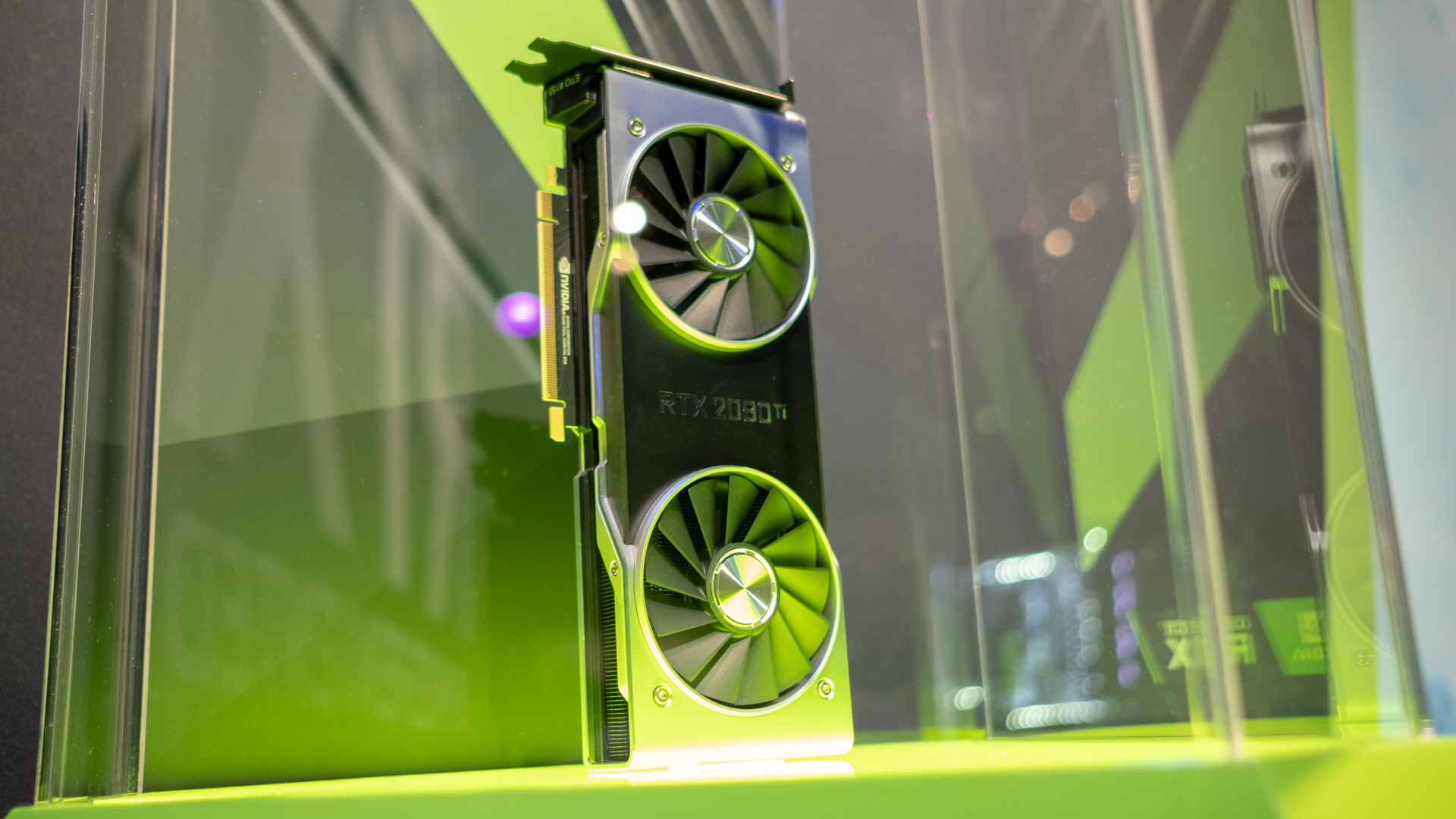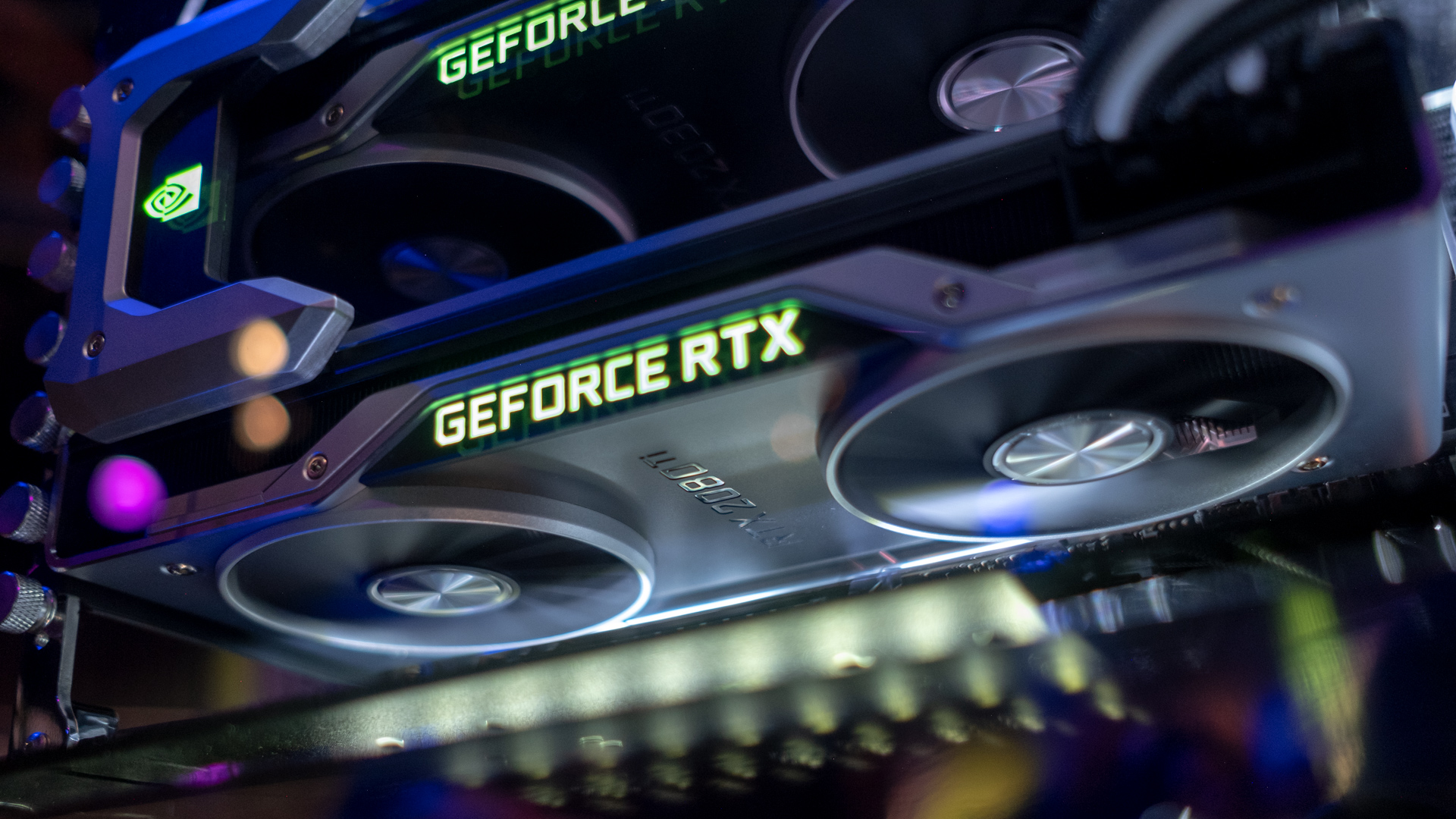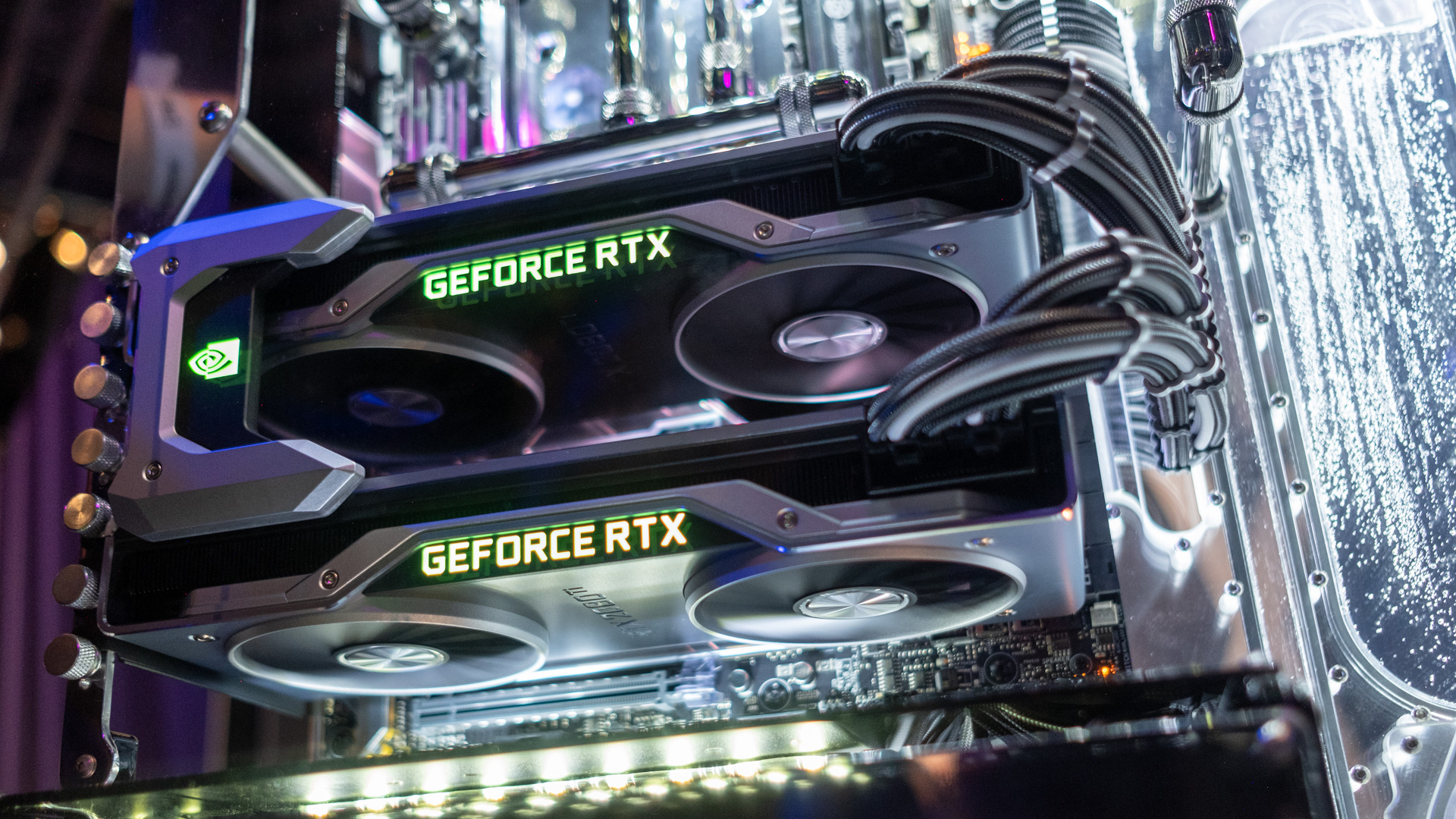Nvidia GeForce RTX 2080 Ti
Updated: We are now able to publicly discuss a bit more of the RTX 2080 Ti specs and features. We've updated our impressions on Nvidia's new flagship graphics cards.
Nvidia GeForce RTX 2080 Ti is a whopper of a graphics card that’s finally able to push 60fps 4K gaming with a single GPU.
But, more impressively, it also features ray tracing and AI-driven Tensor cores to push a new revolution in computer graphics.
That said, the price of admission into this new elite world of graphics is incredibly high.
Price and availability
The Founders Edition version of the Nvidia GeForce RTX 2080 Ti rings up for an almost obscene $1,199 (£1,099, AU$1,899). Although Nvidia has said you’ll also be able to find this GPU at a starting price of $999 or £1,049 (about AU$1,390), that’s still significantly more expensive than the $699 (£669, AU$1,129) price we’re used to seeing on the Nvidia GTX 1080 Ti.

Specifications
While it might cost almost twice as much as the graphics card its replacing, the Nvidia GeForce RTX 2080 Ti delivers some impressive specs with 11GB of GDDR6 VRAM, 4,352 CUDA cores and a boost clock of 1,635MHz when overclocked. Comparatively, the Nvidia GeForce GTX 1080 Ti sports 11GB of last-generation GDDR5X VRAM, 3,584 CUDA cores and a 1,582MHz maximum frequency.
Unlike previous Founders Editions and reference cards the GeForce RTX 2080 Ti will be the very first card from Nvidia to come with a 90MHz factory overclock.
This GPU also features two additional types of cores its predecessor never had in the form of RT and Tensor cores. The RT cores power ray tracing and, though Nvidia has yet to reveal how many of these RT cores are actually in the RTX 2080 Ti, they will supposedly allow this graphics card to render much more complex lighting scenarios and natural shadows than the 1080 Ti ever could.
Meanwhile, Tensor cores bring artificial intelligence to consumer graphics cards and Nvidia hopes to use these to great effect for more efficient anti-aliasing. According to Nvidia, Turing is eight times faster at processing anti-aliasing than Pascal.
Tensor Cores also drive a new technology called Deep Learning Super Sampling, which can increase resolution while applying anti-aliasing at the same time. At the RTX launch event we saw demos Epic Infiltrator, in which a DLSS 2X version of the experience running on an Nvidia RTX 2080 Ti was able to match the quality of 64X super-sampled render with temporal anti-aliasing generated by an Nvidia GTX 1080 – and at much higher frame rates no less.
You’ll also find a surprising number of new ports on this new GPU. For starters the high-bandwidth connector Nvidia has used for years for multi-card setups has been replaced by NV Link, which promises 50 times the transfer bandwidth of previous technologies. The RTX 2080 Ti specifically has two of these connectors to deliver up to 100GB of total bandwidth that it can use to power multiple 8K monitors in surround.
Around the back, you can also spot a newly added USB-C video out port that has become prevalent among new monitors. The USB-C 3.1 Gen 2 port not only supports UHD video, but also pipes out 27 watts of power, so it could be used to drive virtual reality headsets though a single wire.
Design and cooling
The RTX 2080 Ti – and the whole Turing-based RTX series – also brings the first dual fan cooling system ever seen on an Nvidia Founders Edition (aka reference) card.
Typically, first-party cards have always come with a blower-style cooler that essentially sucks in cool air through its fan to funnel heat through the back of the card. A dual-fan system, meanwhile, basically takes cool air and splashes it against an open heatsink to exhaust heat in every direction.
While blower-style coolers are great for isolating heat from the rest of your components, their cooling capacity has been historically much smaller, because a single fan can only move so much air. Dual and multi-fan systems can move much more air but end up leaving more accumulated heat inside your PC case. This debate, among many in the computer industry, has yet to be resolved, so we’ll have to see if Nvidia’s decision to add another fan was a good idea in our testing.
Aside from the new fans, the RTX 2080 Ti also sports a full-length vapor chamber to cover the entirety of the card’s printed circuit board, or PCB. Nvidia has promised the whole system works to deliver ultra-cool and quiet performance – claims that we’ll fully investigate in a proper review.

Performance
Although we haven’t had the chance to benchmark the card thoroughly, we did get to play multiple PC games at 4K and in excess of 60 frames per second (fps) with the RTX 2080 Ti at Nvidia’s GeForce Gaming Celebration event at Gamescom 2018.
Unfortunately, due to multiple non-disclosure agreements we signed, we can only tell you that Shadow of the Tomb Raider looks stunning with ray tracing turned on. Thanks to Nvidia’s RTX technology, shadows do indeed look more realistic – with different intensities everywhere depicted in a stony ruin in the rainforest. We also just gawked at the walls, looking them shimmer as light reflected and refracted off of them.
In terms of frame rate, Shadow of the Tomb Raider ran at a mostly consistent 50-57 fps, which is impressive giving the game is running on a single GPU and in such an early state – on top of all the new ray tracing techniques.
We also played Battlefield V and Metro: Exodus with Nvidia RTX turned on, and saw performance run in excess of 100 fps at 4K and Ultra settings. You can see our Battlefield V gameplay above (we shared it with PC Gamer), which was captured through the Nvidia GeForce Experience app.
Unfortunately, we also don’t know how much power these GPUs had to draw to reach this level of performance.
We’ll also note that the gaming PCs at Nvidia’s event were arranged in the worst way possible, with almost all the machines exhausting heat directly toward the next one behind it. So, we’ll likely see even better performance once we get a card into our isolated test bench.

Early verdict
Whether you’re a PC gamer who was waiting in the wings for a more powerful graphics card or you truly believe in Nvidia’s vision of a ray traced future, the GeForce RTX 2080 Ti is already looking like the world’s most powerful graphics card in the world regardless.
That said, you shouldn’t automatically jump on the pre-order button.
We still have a plenty of unanswered questions about power consumption, when we’ll actually see the lower-priced versions and their shortcomings, new multi-card SLI compatibility and, of course, benchmarking them. Be sure to keep your eyes locked to TechRadar, as it won’t be long before we fully review this new heir to rule the kingdom of graphics cards.
- Nvidia Turing could really shake things up in the world of the best graphics cards
0 comments:
Post a Comment